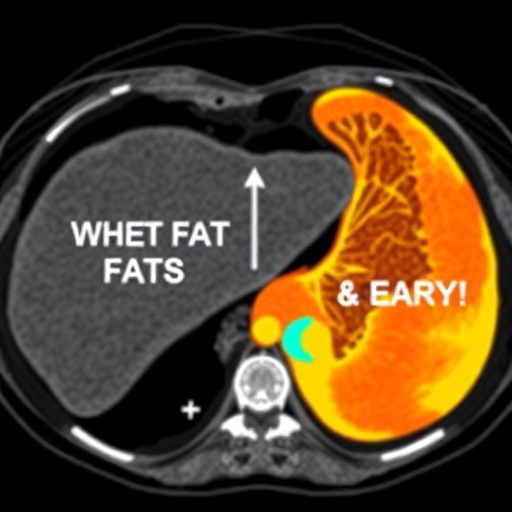In a groundbreaking study published in the Journal of Medical and Biological Engineering, researchers have taken a significant step forward in understanding liver fat quantification by harnessing the power of deep learning technology integrated with clinical data. This innovative approach marks a pivotal shift in diagnostic methods, promising to enhance the accuracy and efficiency of liver health assessments, which is crucial given the rising global incidence of fatty liver diseases.
The liver is a vital organ, playing a key role in various metabolic processes, detoxifying harmful substances, and storing vital nutrients. However, liver fat accumulation, known as hepatic steatosis, can lead to serious medical conditions, including cirrhosis and liver cancer. Traditional methods for assessing liver fat, such as biopsy and MRI, are often invasive, costly, and time-consuming. Thus, the need for a non-invasive, rapid, and accurate technique has never been more critical.
The researchers—Jamrasnarodom, Apiparakoon, Marukatat, and their colleagues—embarked on this study to develop a quantitative ultrasound assessment method that utilizes deep learning algorithms to analyze liver fat content effectively. By integrating clinical data from patients, they aimed to create a comprehensive model capable of providing reliable assessments without the drawbacks of conventional methods.
The study involved a substantial cohort of patients who underwent both ultrasound examinations and clinical evaluations, allowing the researchers to collect a diverse data set. The ultrasound images captured during the procedures formed the foundation for training the deep learning model. This model is designed to recognize complex patterns within the ultrasound images, distinguishing between healthy liver tissue and those with varying degrees of fat accumulation.
Deep learning, a subset of artificial intelligence, mimics the human brain’s neural networks to identify patterns and features in data. In this research, the neural networks were trained on a vast array of ultrasound images, learning to classify them based on the liver fat content. The model’s ability to learn from data improves its predictive accuracy, significantly enhancing the potential for widespread clinical application.
An essential aspect of the study was the integration of clinical data, which included demographic information, laboratory test results, and other health indicators. By combining this data with the ultrasound images, the researchers could enhance the model’s accuracy further, as the additional context allows for more precise assessments of liver fat content and overall liver health. This multifactorial approach also positions the study to address variations in liver fat levels attributed to different demographics, dietary habits, and pre-existing medical conditions.
As the study progressed, the researchers conducted rigorous testing to validate the performance of their deep learning model. They performed comparisons against traditional liver fat assessment methods, emphasizing their model’s non-invasive nature and the speed at which it could deliver results. The preliminary findings demonstrated that the deep learning approach could accurately quantify liver fat, offering results comparable to more invasive procedures while maintaining patient comfort and reducing healthcare costs.
The implications of this research extend beyond merely improving assessment techniques. The potential for early detection of liver-related illnesses through more accessible and less invasive methods could lead to timely interventions, reducing the incidence of severe liver conditions. This could ultimately result in better patient prognosis and a significant decrease in healthcare burden associated with liver diseases worldwide.
Moreover, the study opens new avenues for future research. By refining the algorithms and further expanding the dataset, researchers can potentially develop models that could not only quantify liver fat but also predict progression to more severe liver diseases. This predictive capability could transform the landscape of hepatology, enabling healthcare providers to tailor interventions more effectively for at-risk populations.
As the medical community continues to explore the intersection of technology and healthcare, the findings from this study represent a promising future in the quest for more accurate, non-invasive diagnostic tools. The combination of deep learning with ultrasound technology is a prime example of how modern innovation can address longstanding challenges in medical diagnostics, potentially saving countless lives through earlier and more precise disease detection.
The importance of this research is underscored by the rising prevalence of non-alcoholic fatty liver disease (NAFLD), which is now one of the most common chronic liver diseases globally. With over a quarter of the world’s population estimated to be affected, the need for innovative solutions such as those proposed by Jamrasnarodom and colleagues becomes imperative. This study highlights the potential of leveraging advanced technologies to meet critical healthcare challenges in an ever-evolving medical landscape.
In summary, the quantitative ultrasound assessment of liver fat outlined by the researchers underscores an important advancement in non-invasive diagnostic methods. By utilizing deep learning and clinical data integration, this approach not only enhances the accuracy of liver fat quantification but also embodies the future of medical diagnostics—where technology and clinical practice combine to improve health outcomes for countless individuals facing liver health challenges.
The implications of their findings could reshape the approaches to liver fat assessment and inform public health strategies surrounding liver disease prevention and management. As more studies are conducted to validate and expand upon this research, it is exciting to consider how these developments may revolutionize patient care and outcomes in hepatology and beyond.
Subject of Research: Quantitative Ultrasound Assessment of Liver Fat Using Deep Learning and Clinical Data Integration
Article Title: Quantitative Ultrasound Assessment of Liver Fat Using Deep Learning and Clinical Data Integration
Article References:
Jamrasnarodom, J., Apiparakoon, T., Marukatat, S. et al. Quantitative Ultrasound Assessment of Liver Fat Using Deep Learning and Clinical Data Integration. J. Med. Biol. Eng. (2025). https://doi.org/10.1007/s40846-025-00986-9
Image Credits: AI Generated
DOI: https://doi.org/10.1007/s40846-025-00986-9
Keywords: Deep Learning, Ultrasound, Liver Fat Assessment, Non-invasive Diagnostics, Clinical Data Integration, Hepatic Steatosis, AI in Medicine, Liver Disease Prevention.




